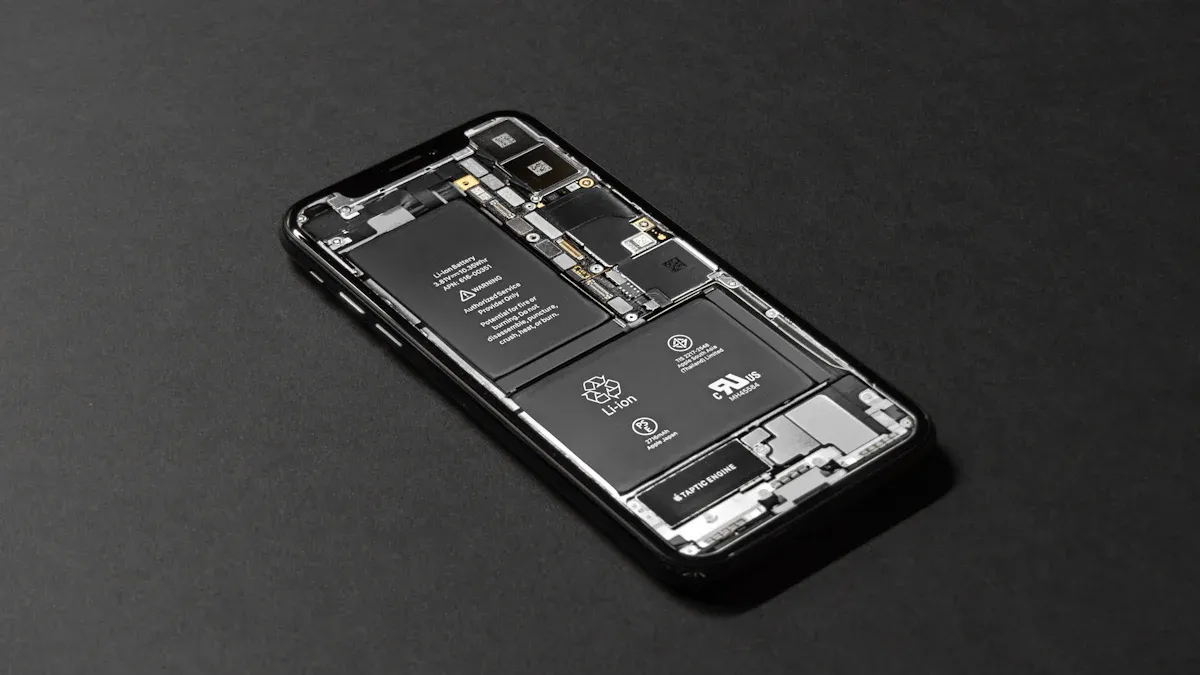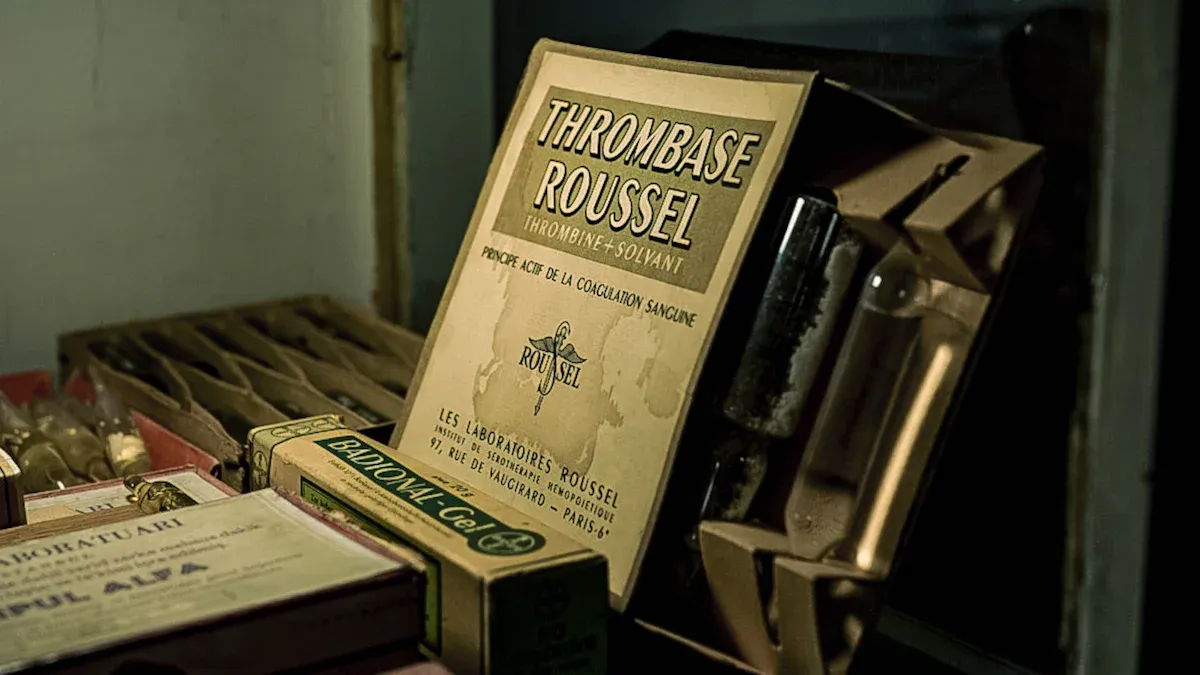How to Keep Your Helius Flashlight in Perfect Condition

Keeping your Helius flashlight in top shape doesn’t have to be complicated. A clean and functional flashlight is always ready when you need it most. Regular care prevents common issues like battery degradation or dust buildup. Did you know that a well-maintained flashlight can last years longer? Follow these essential tips to ensure yours stays reliable.
Quick Tip: Avoid storing your flashlight in damp areas to prevent corrosion.
Common Issue | Preventive Measure |
|---|---|
Battery degradation | Use chargers with safety features and avoid extreme temperatures. |
Dust accumulation | Regularly clean to prevent overheating and burnout. |
Wiring problems | Inspect regularly for wear and handle with care. |
LED overheating | Ensure proper ventilation and avoid high-temperature environments. |
Key Takeaways
Clean your flashlight often to stop dirt from building up. A clean flashlight works well and lasts longer.
Keep your flashlight in a cool, dry spot to avoid rust and moisture. Good storage keeps the inside parts safe.
Check your flashlight every month for damage or problems. Finding issues early helps it work when you need it.
Cleaning Your Helius Flashlight

Keeping your flashlight clean is one of the easiest ways to ensure it stays functional and reliable. Dirt, dust, and grime can build up over time, affecting its performance. Let’s break down how you can clean your flashlight step by step.
Wiping Down the Exterior
Start by wiping the outside of your flashlight. Use a soft, damp cloth to remove dirt and smudges. If there’s stubborn grime, a mild soap solution works wonders. Avoid soaking the flashlight or letting water seep into the seams. Pay attention to the grip and buttons, as these areas often collect the most dirt. A clean exterior not only looks good but also ensures a better grip during use.
Pro Tip: Use a microfiber cloth to avoid scratching the surface.
Cleaning the Lens for Optimal Light Output
Cleaning the lens is crucial for maintaining bright and clear light. Dust or fingerprints on the lens can reduce the flashlight’s brightness. Use a lens cleaning solution or a mix of water and isopropyl alcohol. Gently wipe the lens with a lint-free cloth. Avoid using abrasive materials that could scratch the surface. Regularly cleaning the lens ensures your flashlight delivers optimal performance every time.
Removing Dirt and Debris from Threads and Seals
Threads and seals are often overlooked during maintenance, but they’re essential for keeping your flashlight waterproof and functional. Unscrew the flashlight’s head and tailcap to access the threads. Use a small brush or a cotton swab to remove dirt and debris. Apply a thin layer of silicone grease to the threads to keep them lubricated and protected. This step helps maintain the flashlight’s durability and prevents wear over time.
By following these steps, you can clean your flashlight effectively and keep it in excellent condition.
Flashlight Battery Care
Taking care of your flashlight’s batteries is essential for optimal performance and reliability. Neglecting battery maintenance can lead to dim light, inconsistent performance, or even damage to the flashlight. Let’s explore how you can keep your batteries in great shape.
Choosing Compatible Batteries
Using the right batteries ensures your flashlight operates at its best. Not all batteries are created equal, so it’s important to choose ones that match your flashlight’s requirements. Here are some great options:
Alkaline batteries: Reliable for everyday use and perform well in most conditions.
Lithium batteries: Lightweight and deliver exceptional performance, ideal for high-powered flashlights.
18650 batteries: Known for their high capacity and long runtime, perfect for demanding applications.
Rechargeable batteries: Eco-friendly and cost-effective, suitable for frequent use.
Always check your flashlight’s manual to confirm compatibility. Using the wrong type can reduce performance or even damage the battery compartment.
Preventing Corrosion on Battery Contacts
Corrosion can wreak havoc on your flashlight’s battery compartment. It often appears as a white or greenish powdery substance around the contacts. You might notice dim light, flickering, or difficulty turning the flashlight on. To prevent this:
Remove batteries if you won’t use the flashlight for a while.
Store it in a cool, dry place to avoid moisture buildup.
Clean the battery compartment regularly with a cotton swab dipped in vinegar or isopropyl alcohol.
Quick Tip: Apply a small amount of dielectric grease to the contacts to protect them from corrosion.
Replacing Batteries for Consistent Performance
Old or depleted batteries can cause your flashlight to underperform. Replace them as soon as you notice dim light or inconsistent brightness. When replacing, always:
Inspect the battery compartment for any signs of corrosion or damage.
Insert the new batteries in the correct orientation.
Dispose of old batteries responsibly to protect the environment.
Regularly replacing batteries ensures your flashlight is always ready when you need it most. It’s a simple step that guarantees optimal performance and extends the life of your flashlight.
Proper Flashlight Storage

Proper storage plays a big role in keeping your flashlight reliable and ready to use. By following a few simple tips, you can protect it from damage and extend its lifespan.
Storing in a Cool, Dry Location
Always store your flashlight in a cool, dry place. Moisture can lead to corrosion, which damages internal components and battery contacts. A dry environment prevents this and keeps your flashlight in working condition. Avoid areas like basements or bathrooms where humidity levels are high. Instead, choose a drawer or shelf in a climate-controlled room. This small step ensures your flashlight stays functional when you need it most.
Quick Tip: If you live in a humid area, consider using silica gel packs to absorb excess moisture.
Avoiding Extreme Temperatures
Extreme temperatures can harm your flashlight’s performance. Cold weather can cause lithium batteries to lose efficiency, especially below -40°F. Metal flashlights may also lose heat quickly, making them less comfortable to hold. On the other hand, high temperatures can damage plastic components or cause alkaline batteries to leak. According to Duracell, alkaline batteries work best between -4°F and 130°F, while lithium batteries can handle a wider range. Storing your flashlight within these limits ensures it performs reliably.
Using a Protective Case for Longevity
A protective case shields your flashlight from scratches, dust, and accidental drops. It’s especially useful if you carry your flashlight in a bag or toolbox. Cases with padding offer extra protection for the lens and body. This simple addition can prevent wear and tear, keeping your flashlight in top condition for years. Plus, it makes organizing your gear much easier.
By storing your flashlight properly, you’ll reduce the need for frequent maintenance and ensure it’s always ready to go.
Regular Flashlight Maintenance and Testing
Keeping your flashlight in top condition requires regular maintenance and testing. These essential care tips will help you spot potential issues early and ensure your flashlight is always ready when you need it.
Inspecting for Wear and Tear
Wear and tear can affect your flashlight’s performance over time. Regularly inspecting it helps you catch problems before they worsen. Here’s what to look for:
Check the exterior for scratches, dents, or cracks that could compromise durability.
Inspect the lens for smudges or scratches that might reduce light output.
Examine the threads and seals for dirt or damage that could affect waterproofing.
Regularly cleaning your flashlight is crucial for maintaining its peak performance. Most flashlights should be cleaned every six months depending on how regularly it’s in use. Follow these steps to keep your flashlight in pristine condition: 1. Begin by removing the batteries to prevent any accidental activation. 2. Gently wipe the exterior of the flashlight using a soft, lint-free cloth or a slightly damp cloth if necessary. 3. Inspect the battery compartment and contacts for any debris or corrosion.
By addressing these issues early, you’ll extend the life of your flashlight and avoid unexpected failures.
Testing Light Modes and Switch Functionality
Testing your flashlight’s light modes and switches is another important part of regular maintenance. Turn on your flashlight and cycle through all the light modes. Make sure each one works as expected. Pay attention to the switch. Does it feel sticky or unresponsive? If so, clean around it with a soft brush or cloth. A functional switch ensures you can rely on your flashlight in any situation.
Quick Tip: Test your flashlight monthly to catch any issues before they become major problems.
Checking for Internal Corrosion
Internal corrosion can cause serious damage to your flashlight. It often starts in the battery compartment, so inspect it regularly. Look for white or greenish residue around the contacts. If you spot corrosion, clean it immediately. Use a mixture of vinegar and water or lemon juice to dissolve the buildup. A cotton swab or soft brush works well for scrubbing. Once clean, dry the area thoroughly with a cloth to prevent moisture from causing further damage.
By following these essential care tips, you’ll keep your flashlight in excellent condition. Regular maintenance and testing ensure it’s always ready to perform when you need it most.
Taking care of your Helius flashlight doesn’t just keep it working—it ensures it’s ready when you need it most. Regular cleaning, proper storage, and battery maintenance make a huge difference. A well-maintained flashlight offers reliable illumination, especially in emergencies. By making these steps a habit, you’ll extend its lifespan and enjoy consistent performance for years.
Remember: A little effort today keeps your Helius flashlight dependable tomorrow.
FAQ
How often should I clean my Helius flashlight?
You should clean it every 3-6 months, depending on usage. Regular cleaning prevents dirt buildup and ensures optimal performance.
Can I use any type of battery in my flashlight?
No, always use compatible batteries specified in the manual. Using the wrong type can damage your flashlight or reduce its performance.
Tip: Rechargeable batteries are eco-friendly and cost-effective for frequent use.
What should I do if my flashlight gets wet?
Dry it immediately with a soft cloth. Check the seals and battery compartment for moisture. If needed, reapply silicone grease to the threads.
See Also
Key Advice for Keeping Your Flashlight in Top Shape
In-Depth Review of the Heliusworld Flashlight Model
A Comprehensive Guide to Flashlight Cleaning Techniques
Complete Handbook for Maintaining and Cleaning Your Flashlight
Helius Tactical Flashlight: Brightening Your Outdoor Experiences
